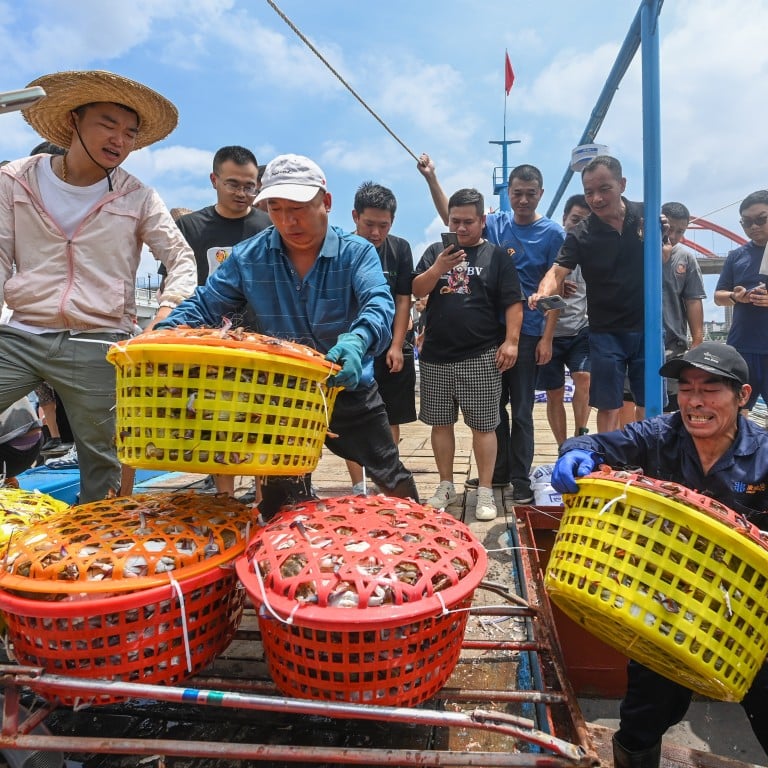
China dispatches massive vessel to catalogue fisheries, scale up industry presence
- As China’s largest fishery research vessel sets off to survey marine resources, the country is taking steps to keep distant-water fleet in line
- Complaints have mounted as fishing vessels have travelled far and wide, raising fears of depleted stocks
China’s largest fishery research vessel has cast off on its first overseas mission as the country strives to shed a long-held image as a ravenous consumer of global fish stock and gain a greater say in the industry’s governance.
The independently developed Lan Hai (Blue Ocean) 201 set sail from Shanghai last Thursday to carry out surveys in the high seas of the northwestern Indian Ocean, according to Chinese media reports.
“The high seas are an important source of high-quality protein for China and an important strategic support point for our marine strategy,” said Fang Hui, director of the East China Sea Fisheries Research Institute of the Chinese Academy of Fishery Sciences, which owns the vessel.
“Carrying out surveys of fishery resources in the open ocean is important for achieving the sustainable development of distant-water fisheries and safeguarding China’s maritime rights,” Fang said.
The voyage will last four months and cover 100 sites, according to the institute, and assess the volume and biological diversity of fishery resources as well as the hydrological and meteorological elements around major fisheries.
Weighing 3, 289 tonnes and measuring 84.5 metres in length and 15 metres in width, Lanhai 201 has a cruising power of 10,000 nautical miles and is equipped with an internationally advanced scientific investigation system.
Can deep-sea fishing feed China, or will the haul be too costly?
“This offshore survey mission can help integrate China’s distant-water fisheries into [Belt and Road Initiative] industrial development, and enhance China’s voice while participating in international fishery governance,” said Tang Xiaolin, captain of the vessel.
A consumer of a full third of the world’s fish, China is also the globe’s biggest seafood exporter thanks to its massive distant-water fleet, the largest of any country.
According to figures from the Chinese government, the country had 2,551 distant-water fleet vessels operating in the high seas of the Pacific, Indian and Atlantic oceans and the seas around Antarctica, as well as in waters under the jurisdiction of cooperating countries as of 2022.
But according to a 2020 study by the London-based think tank Overseas Development Institute, the actual number could be close to 17,000. It is also unclear, the authors said, whether the Chinese government has comprehensive control over the sector, as vessel ownership is highly fragmented and ships can be registered in other jurisdictions.
To better fulfil its international obligations, Beijing has pledged to control the size of its distant-water fleet and cancelled their fuel subsidies, according to a white paper published by the State Council Information Office in October.
A significant effort will be directed towards the implementation of international agreements
However, the office said, China still lags behind developed countries in terms of fishing vessels and equipment, fishery cataloguing and the contribution of science and technology to the industry’s development.
“By optimising the industrial structure, strengthening scientific and technological foundations, increasing regulatory capabilities, participating extensively in international fisheries governance, and improving the policy system, China aims to achieve high-quality development of its [distant-water fleet] sector,” it said.
By 2025, the size and output of the country’s distant-water fleet will be stable, with fewer violations and accidents, as well as more effective supervision and administration, the office said.
“A significant effort will be directed towards the implementation of international agreements,” it added.


